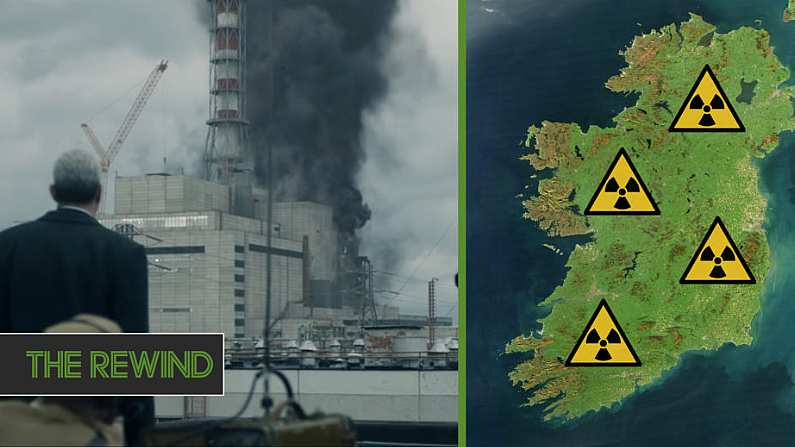Ever since harnessing atomic power became conceivable, with the first artificial splitting of an atom in 1932, society's relationship with nuclear power has been an uneasy one. Despite the fact that, when nuclear power plants are operated correctly - and not built by cripplingly incompetent communist regimes - they are among the most efficient, effective, and environmentally friendly means of creating electricity that we possess. However, their capacity for causing terrible damage through accidents has ensured that we view nuclear power with a mixture of fear and a certain macabre fascination - distinct from how we view any other means of generating electricity. After all, could you imagine HBO creating a mini-series about an accident at a tidal energy plant? Not even a little bit, it simply wouldn't happen.
Despite people's unease about the possible consequences of a significant nuclear accident, in the first few decades of commercial nuclear power there had been few real accidents at nuclear power plants - or at least few that were openly reported on. However, on the 26 April, 1986, people's worst fears surrounding the safety of nuclear power were realised following an explosion at reactor number four of the Chernobyl nuclear power plant due to an accidental electricity surge during a routine stress test. The resultant radioactive cloud emitted from the burning, exposed reactor over the ensuing weeks and months, resulted in innumerable deaths; the forced evacuation of an entire city, and a five-part HBO mini-series.
However, while the worst of the effects of the disaster were undeniably felt within the Soviet Union, predominantly in modern Ukraine and Belarus, all of Europe was impacted to some degree by the radiation, including Ireland.
Now, when many people think of Ireland in the 1980s, we will remember perhaps, the shamefully pervasive mullet-moustache combos; we will no doubt remember Johnny Logan's Eurovision supremacy. What will not typically spring to mind however, is the fact that Ireland, was covered in a layer of radioactive pollutants from the Chernobyl disaster, which - were it not for changes in the winds - could've ended up being far more devastating than they were.
In the immediate aftermath of the disaster winds carried radioactive particles gushing from the reactor around the continent. Indeed, the accident, which the Soviet state was trying to keep hidden, even from its own people, was only announced after worrying levels of radiation were detected at a Swedish nuclear plant some two days after the explosion. It was only then that the Soviets acknowledged that an accident had occurred, evacuating Pripyat - the city adjacent to the power plant that had been constructed to house the plant's workers and families.
By May 2nd, 1986, radioactive particles in the atmosphere, released by the explosion, were detected for the first time in Ireland, in Glasnevin. Radioactive materials, predominantly isotopes of caesium and iodine, were deposited across Ireland over the following days, before winds changed, redirecting the radioactive plume back across Europe. The deposits of these radioactive isotopes were reportedly heaviest in the midlands and Ulster. However, ambient radioactivity in Dublin, for example, increased by 30% during this time.
While the impact on public health from this was estimated to be minimal, Dr. Mary Dunphy, formerly a member of the Irish Medical Campaign for the prevention of Nuclear War, speaking to The Irish Times in 1996, said that it was impossible to truly assess the possible health effects on the Irish populace as no baseline - for example, a register of miscarriages - existed in Ireland prior to Chernobyl. Given that many of the most immediately noticeable effects from exposure to radiation appear in infants, and in infant mortality rates, it was therefore impossible to quantify whether there had been a significant, noticeable impact. However, it is widely assumed that the effect on public health was minimal.
That does not mean however that the threat of damage being inflicted on the Irish public was not considered, and feared. Measures were brought in to monitor radiation levels in milk, as, given the speed with which it is transported from farms to cities, was the food product was the most likely to transfer concentrated amounts of short-lived, damaging isotopes, like iodine, to civilian populations. The Nuclear Energy Board, set an upper limit on the radioactive levels permissible in milk and other food items, none of which were ever exceeded, despite significant increases in radiation being noted.
Attention was also given to sheep being farmed in elevated, peaty areas. This was due to the fact that peat is poor at binding with radioactive elements that would have collected in such land. Consequently, it is easier for sheep in these areas to ingest radioactive particles, and for humans to become contaminated when their meat is consumed. In 1996 for example there were still 57 farms in Norther Ireland, containing almost 15,000 sheep that remained designated 'Chernobyl restricted areas' and meat produced in these areas had to undergo mandatory inspection and radiation tests. Meat from sheep in these areas which recorded excessively high levels of radiation were not permitted to be distributed for sale.
In the same article in The Irish Times it was reported that, despite these regulations in Norther Ireland, no such measures existed within the Republic. The Department of Agriculture declared that there was no need to implement equivalent measures. This was despite the fact that elevated areas within the Republic, which were used as pastures for sheep, were known to contain similarly high levels of radioactive particles as those within the restricted areas in Northern Ireland - and in some instances, even higher levels.
While this didn't mean that any of these affected sheep were likely to glow in the dark, or develop some kind of beneficial super power, as - the Chernobyl mini-series has shown us - the effects of radiation exposure are positively less fun than pop culture can make out.
While, the long-term effects on public health in Ireland were not estimated to be severe, it shows how far-reaching and insidious the threat posed by nuclear accidents can be. It illustrates that the places affected by collateral damage from such a disaster are completely arbitrary, and are in fact largely dictated by that ol' friend of ours, the crutch of polite small-talk; the weather. Even places geographically far removed from the centre of such a disaster can still be effected, as radiation does not know borders.
And on that utterly bleak note, the finale of an utterly bleak, but brilliant, series airs tonight on Sky Atlantic, so brace yourselves people.














